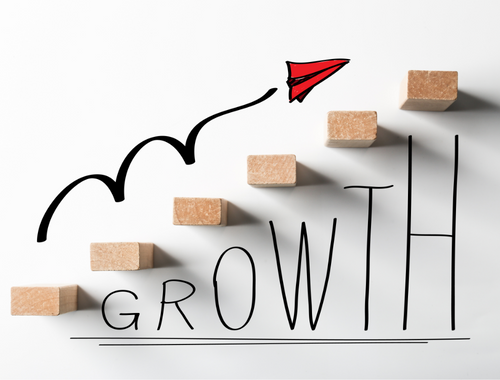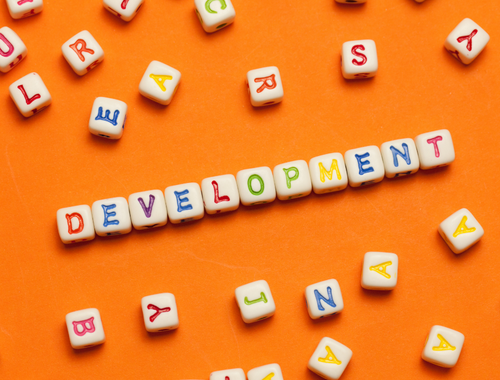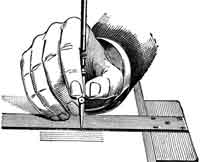The terms “growth” and “development” are frequently used interchangeably. However, these two terms must be more frequently understood and should never be used interchangeably. Growth is when anything gets bigger, more numerous, stronger, etc., over time, whereas development is when something gets better or more efficient.
Growth is more focused in an organizational context, generating bigger profits and revenues, whereas development is more concerned with learning and enhancing procedures and the general business environment.
To assist you in understanding the similarities between growth and development, we’ll look at them one by one below.

What Does Growth Mean?
Typically, ” growth ” refers to a rise in size or quantity. It is a positive quantitative change that can easily be seen, measured, or tallied. Growth is measured, articulated, and conveyed in businesses in terms of matrices, such as a 25% increase in annual sales revenue, a 10% increase in the number of employees during the current quarter, a 7% extra gain in market share, a 5% increase in net annual profit, etc. These measurements establish the degree to which an organization has gone through externally visible and quantitative changes.
Growth is crucial for all kinds of businesses, regardless of size and scope. Growing a firm signifies that it will expand and move toward success and prosperity. Most organizations aim to expand; smaller ones want to get bigger, while bigger ones want to get even bigger.
For organizations, particularly commercial ones, to thrive in a highly competitive economic environment, they must expand continuously. This is because all business expenses rise over time, including those for raw materials, salaries, labor, and marketing. As a result, entities must continuously increase their sales and profit numbers to offset this inflationary impact and maintain profitability.
Growth offers small enterprises better potential to deal with market changes, economies of scale, increased power and influence, and a higher survival rate.

What Does Development Mean?
Compared to growth, the phrase development is more inclusive. Growth and business environment improvement are examples of an entity’s development. This indicates that development includes changes to the organization’s internal and external environments and changes in the size and volume of business.
Along with measurable growth (as previously explained), many qualitative activities contribute to an organization’s development, such as employee training and motivation programs, changes to production procedures, the adoption of software packages for bookkeeping requirements, partnerships with other entities and institutions, the provision of better after-sale services, a more conscious approach to environmental responsibility, etc.
It isn’t easy to quantify development because it combines both quantitative and qualitative accomplishments. For instance, increasing staff motivation would undoubtedly benefit the firm, but it is impossible to quantify and quantify this motivating level.
According to another definition, development is a process of learning and change that raises a system’s complexity, variety, and quality.
When we say that an organization has developed, we’re talking about its advancements in its capacity to meet its own wants and needs and those of others who are somehow associated with it. So the development of the individual and the organization is more about learning than making money.
Similarities
Both Play Significant Roles in Evaluating the Progress of the Organization
When a business is in organizational growth, it can explore expansion and may start looking for new ways to increase revenue. Organizational development depends on business lifecycles, market growth trends, and owners’ preferences for creating equity value.
Some organizations can see tremendous organizational expansion by obtaining access to new markets. For example, a small business might experience tremendous development through increasing the demand for its services or goods, particularly in a sector where competition has yet to become completely established.
Both Can Be Useful in Forward Acquisition
Acquisitions and mergers are other tools businesses can use to increase profitability, expand, and grow. For example, purchasing component businesses that are essentially a part of an organization’s distribution chain constitutes a forward acquisition expansion. For instance, if you own a supermarket, you could use a forward acquisition to buy other properties to rebrand under your supermarket’s name. This gives your company access to new markets while pushing rivals out of the way.
Both Can Result in the Improvement of the Organization
Regardless of their size, many businesses aim for organizational growth and development. It can give businesses many advantages, including enhanced power, improved ability to resist market swings, and better efficiencies due to economies of scale.
Through organizational growth, a business can continuously enhance its operations and products. OD contributes to increased efficiency by assisting in strategic decision-making across the organization’s activities. With the same or less input, this typically results in superior outcomes.
Both Can Increase Profitability
One of the results of organizational growth and development is increased profitability. Operations optimization boosts overall productivity and efficiency. Additionally, it encourages innovation, which leads to higher profitability. The fundamental goal of this optimization is to support the development of workable answers to an entity’s issues. Find the most practical and efficient approach to solving problems to do this.
Helps in Communicating the Future Vision
An organization’s leaders must understand the nature of future operations if it is to grow in the future. To gain support from others for accomplishing the vision, it is also necessary to communicate the future vision. Organizational development aids in sharing a future vision, thereby bringing together the essential capability and potential to realize the vision.
Conclusion
Growth is especially associated in business with metrics like revenues, profits, and market shares. In contrast, development refers to all the components that go into an organization’s discipline, strength, notoriety, survival, and eventual effectiveness.
The primary distinction between growth and development is that the former refers to positive changes that can be generally expressed quantitatively and are countable or measurable. In contrast, the latter refers to changes and modifications of both a quantitative and qualitative nature that are sometimes not countable or measurable.
Growth and development have an interesting relationship in commercial businesses. Both move forward side by side and are steadfastly supportive of one another. Growing revenues and earnings boost the flow of resources into businesses, which may then be used to improve business operations and staff morale by setting up training and motivating initiatives, among other things. Development then boosts growth, which also brings effective procedures and highly motivated personnel.
FAQs
What are the Differences in Growth and Development?
Growth is more focused in an organizational context, generating bigger revenue and profit numbers, whereas development is more thoughtful of learning and enhancing procedures and the general business environment.
What are Common Characteristics of Growth and Development?
Investment, education, and healthcare are the key elements that impact growth and development. For example, long-term economic growth and development depend on capital goods and technology investments.
How are Economic Growth and Development Similar?
The economy changes quantitatively as a result of economic expansion. Income growth at the national or per capita levels is reflected in economic growth. Economic growth entails changes in the country’s socioeconomic structure through time and income, savings, and investment changes.
What are the Similarities and Differences Between Developing and Developed Nations?
The distinction: A developed country has an effective rate of industrialization and per-capita income. A country is considered to be developing if its rate of industrialization is modest and its per capita GDP is low.
Similarity: The housing situation is one of the areas where developed and developing nations most closely resemble one another. Due to the high costs of mortgages and the interest rates that real estate companies charge, buying a home has become more difficult in developed nations.
What are the 4 Main Types of Growth and Development?
There is only one type of development, although there are various types of growth. Quantitative growth is the most typical because it happens when something increases over time by a predetermined quantity or number that can be observed and measured.
There is only one type of development, which is the process of improving something through time through an improvement that cannot be gauged by how much was improved during the period of change.
What is the Example of Growth and Development?
Growth as an illustrative example: A rise in personnel count from 50 to 100.
Development, For instance, a business might upgrade an old SUV model with modern amenities and technology without producing more cars overall.












Leave a Reply